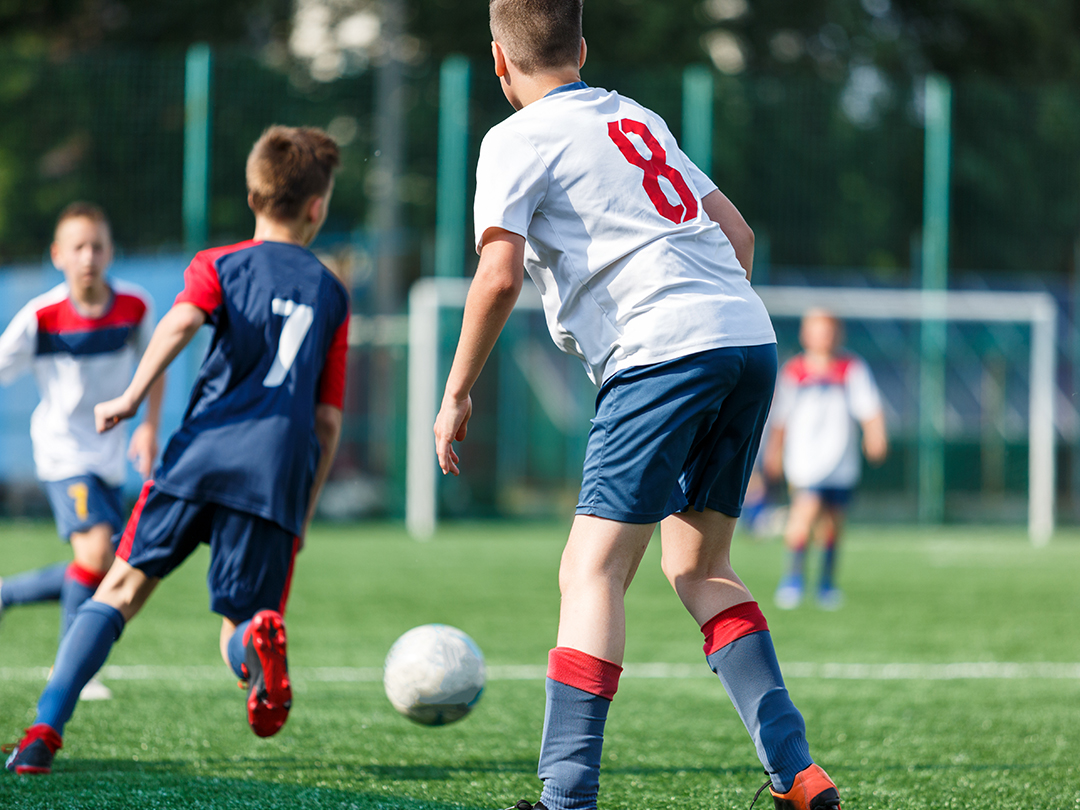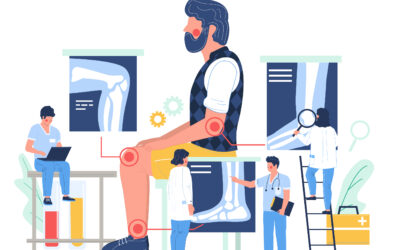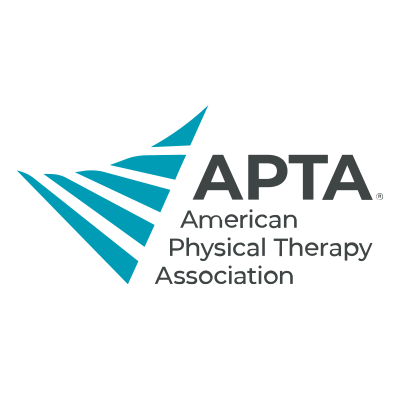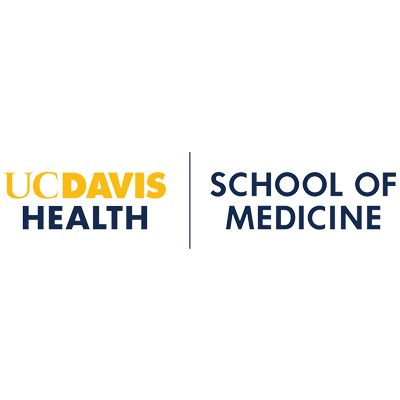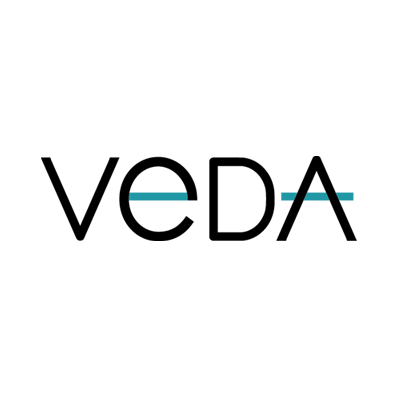As summer comes to a close and school starts, many children and teenagers return to youth sports. They may be recreational athletes or competitive athletes who are ramping up their level of play to get ready for their season. It is not unusual during this time for kids to start complaining about soreness and fatigue as their bodies are being stressed physically, but some of these complaints may be tied into cognitive fatigue as they’re returning back to school. The goal of this article is to educate parents and coaches about how to keep young athletes healthy so hopefully those athletes adopt healthy habits for managing injuries as they enter into adulthood.
Returning to play after a period of rest or mild injury
Athletes who are ramping their activity level up after an off season of very little activity, or starting to return to activity after 2-3 weeks of rest after a mild to moderate strain or sprain need to understand that it takes about 4-6 weeks for tissues to toughen back up to the strength they had during the previous season.
Quite often, kids go from doing very little structured activity to practicing 2-3 times a week for 2 hours, or practicing every day of the week at varying intensities. We know that muscle tissue gets stronger and more powerful with consistent exposure to work, but it has to be at a pace the tissue can handle. When the workload is more than the tissue can handle and there is not enough of a rest period, chronic injuries can occur. Young athletes are at a higher risk of overloading their tissues because their bodies are constantly growing and changing. Even within a 6 month span a child’s or adolescent’s tendons, bones, hormones, and muscles could drastically change depending on how big of a growth spurt they have had, and therefore be more vulnerable to an overuse strain.
In an article in March 2019 by Clinical Pediatrics, a retrospective study for pediatric sports injuries spanning 6 years showed children less than 9 years of age demonstrated overuse injuries which led to the possibility of bony growth inside tendons and ligaments or risk of injury to the growth plate. Kids older than 15 years old presented with chronic tendonitis, bursitis and other overuse injuries. Children between 9-15 presented with a mixture of both. A significant number of these athletes reported playing through the pain prior to being evaluated.1

Helping ensure a young athlete’s recovery
Due to kids not wanting to let their team, coach or parents down, they may continue through practices and games in pain. As a coach, if you notice an athlete is consistently limping during practice or guarding how they move their arm after a throw or tackle, or as a parent you see your kid wince when they have to use stairs or move their arm or leg quickly, you may have to be quite persistent in getting your athlete to admit they are injured.
Another big role for parents and coaches in dealing with young athletes is helping them understand how to help their bodies through recovery, including when they have to sit out of competition all together. In the book Sport, Recovery and Performance: Interdisciplinary Insights,2 one of the chapters discusses how young athletes are vulnerable to reinjury because they lack the maturity to self-regulate and have insufficient knowledge on recovery strategies. As a parent or coach, if you feel you lack the knowledge to help an athlete recover safely, a physical therapist can help. Physical therapy education teaches:
- How to evaluate and manage different pathologies
- The ideal postures kids’ bodies should be in for strengthening
- The strengthening exercises that should be avoided depending on the stage of injury or type of injury Ideal form for flexibility to prevent injury
- What an athlete should immediately start doing if they become injured
Additionally, physical therapy can empower an athlete to not feel guilty if they need to step down from competition to avoid a bigger injury.
Keeping aware of mild concussions
Concussions and their long-term effects have been prevalent in the media, and most people are aware when an athlete loses consciousness they immediately qualify as having a concussion. However, athletes can suffer concussion even without a loss of consciousness when their head gets hit or hits the ground or from whiplash-like motions, such as getting tackled from behind. It is also possible to have mild concussions outside of sporting events as kids can hit their heads doing the numerous crazy things kids are known to do.
Now this is not to say kids should be bubble-wrapped, but to be aware concussions can happen without a loss of consciousness and because children don’t know the definition of a concussion, or its symptoms, they may not say anything about feeling differently. Therefore, coaches and parents should be aware of the symptoms of a concussion which may include some or all of the following:
- Headache
- Nausea
- Vomiting
- Drowsiness
- Numbness or tingling
- Dizziness
- Balance problems
- Sleeping more than usual
- Difficulty concentrating
- Difficulty remembering
- Sensitivity to light
- Sensitivity to noise
- Feeling slowed down
- Feeling as if “in a fog”
- More emotional than usual, irritable, sadness and nervousness
The tricky thing with mild concussions is that symptoms may not appear immediately. It may take 24 hours for axons to swell enough to produce an altered homeostasis within the brain’s chemistry which leads to symptoms. Additionally, most imaging will appear normal as diffuse mild axonal swelling often is too small to be picked up by a scan, so it is important to be aware of the symptoms to evaluate if an athlete abruptly seems more off in practice, is struggling suddenly in the classroom, or is more emotional over home/school/events beyond what is normal for them.
If an athlete appears stunned but awake after a hard hit or bad fall, it is important to have an on-field assessment done by an athletic trainer to evaluate their mental and physical state. If your team does not have an athletic trainer, the PAR Concussion Recognition and Response app helps provide information for coaches and parents on signs and symptoms of a concussion, what to do if you suspect a concussion and how to communicate with the school about observing any changes in the athlete’s symptoms.
Most concussions will resolve within 1-2 weeks, although children and adolescents may take longer since their brains are still developing. Only 10-20% may have latent symptoms that could last days to months. In these cases, a team approach which includes neurology, physical therapy, neuropsychology, neurooptometry and speech therapy is advised so all aspects of the athlete’s functional health are being evaluated and treated. Furthermore, athletes in contact sports should have a baseline neurocognitive test done before the start of a season to help evaluate their cognitive health before returning to sport. If you are not part of a school-based sport which may provide this for their athletes, contact your primary care physician to see if there is a neuropsychologist in your medical plan that could administer the test.
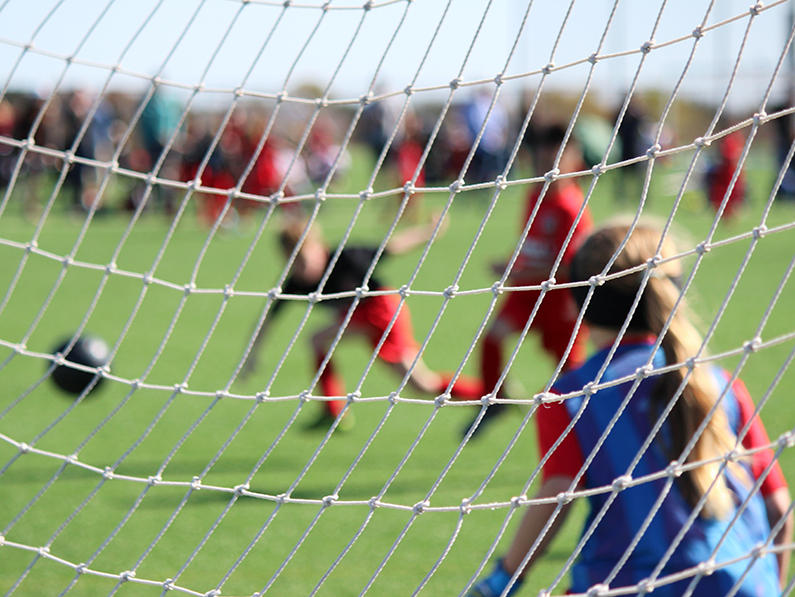
Sleep
As physical therapists may not be sleep study experts, but we are aware of what a lack of sleep does to our adult patients as they are trying to recover from acute injuries or surgeries. Lack of sleep can lead to people feeling moody or a lack of focus, but our bodies also need deep, quality sleep to restore the immune system, the endocrine system, and to facilitate the recovery of the nervous system and metabolic system.3 Of course, for student-athletes the other critical role of deep sleep is its contributions to learning, memory and synaptic development in forming new neurocognitive pathways.
Young brains need deep sleep not just for ideal school performance, but for learning new plays or techniques and to quickly adjust to different plays on the field. A rested immune system and endocrine system allows for a more optimal recovery from practice or competition, to avoid chronic injuries.
There is not exact evidence of how many hours of sleep are specifically needed for certain athletes or age-groups, but many research articles suggest quality of sleep and evaluation of performance (scholastic and athletic) should be the guide.
Good sleep hygiene recommends:
- Avoiding caffeine after 3 pm
- Avoiding extremely strenuous exercise 2 hours before bed (this seems to vary as for some it tends to keep them more awake and for others it tends to help them fall asleep due to exhaustion)
- Avoiding computers/phones or gaming devices 1 hour before going to bed
- Having a consistent bedtime routine and bedtime
- Having techniques to manage any pre-bedtime anxiety or stress
- Sleeping in a dark room with comfortable temperature
- Having a consistent wake time
- Trying to avoid napping longer than 20-30 minutes if a nap is needed.
Sleep is very critical for athletes recovering from concussions and lack of quality sleep can delay return to school or sports. For recovering head injuries, the brain may need 8+ hours of uninterrupted sleep at night with consistent bedtimes and wake times to retrain the circadian rhythm.
Lastly, healthy sleep is critical for trying to prevent or manage levels of anxiety and depression.4 In an article in Orthopaedic Journal of Sports Medicine published in March 2019, 756 athletes (ages 6 to 18) were evaluated for the amount of sleep they got versus the recommended amount of sleep given their age. Among athletes 6 to 12 years old, 26% were not meeting the sleep recommendation for age, compared to 45% of 13 to 18-year-old athletes.
After adjusting for age, gender, injury history, nighttime internet access, and hours of homework per week, the odds of not meeting the recommended amount of sleep increased with age. Athletes reporting past diagnoses of anxiety and/or depression had higher odds of not meeting the sleep recommendation and increased daytime sleepiness.
When stratified by age group, the odds of not meeting the recommended amount of sleep increased among older athletes. Middle-school athletes with a self reported history of anxiety and/or depression had a greater likelihood of not meeting the sleep recommendation and also had higher daytime sleepiness scores. Only daytime sleepiness increased among high school aged athletes with anxiety/depression.
Hopefully this article has provided education to parents and coaches of how to keep young athletes healthy for their athletic and scholastic endeavors. Folsom Physical Therapy & Training Center has a return to play concussion program, as well as a long history of treating orthopedic injuries, and appointments can be made by calling 916-355-8500.
Resources
- Valasek, Amy Elizabeth et al. Age and Sex Difference in Overuse Injuries Presenting to Pediatric Sports Medicine Clinics. Clinical Pediatrics. June 2019. 58 (7) 770-777.
- Kellmann, Michael et al. Sport, Recovery and Performance: InterdisciplinaryInsights, Routledge, New York, NY, 2018
- Doherty, Rónán et al. Sleep and Nutrition Interactions: Implications for Athletes. Nutrients 2019; 11(4) 822
- Stracciolini, Andrea et al. Lack Of Sleep Among Young Athletes Is Associated With A Higher Prevalence of Self-Reported History Of Anxiety and Depression. Orthopaedic Journal of Sports Medicine March 2019 7 (3)

